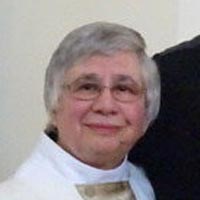From the Desk of a Deacon
Like the rest of you, I have just attended my Parish’s AGM. It was an encouraging time for me to watch the team of people who look after our Parish; not just the administration but also the liturgical pieces and the pastoral care of the people. As I participated in that meeting, I was reminded of some observed facts about geese that I read a while ago. You may be familiar with this information but I thought it was worth mentioning again. Let me be clear, we are talking about that Canada goose here, although all geese behave in the following manner:
The first fact is: as geese flap their wings, they create an uplift for the bird following. By flying in a V formation, the whole flock adds 71% greater flying range than if any bird were to fly alone. This is about teamwork. Flying together creates an uplift, a surge that carries the whole group farther than its individual parts could go by themselves. We need to work together in these unprecedented times, clergy and lay people together in order to provide the pastoral care and support for our people. We each have been called to a different job within the body, and we all need to do those jobs. We are truly a flock. The forward movement of the group, its success, is dependent on the efforts of us all.
The second fact is: whenever a goose falls out of formation, it suddenly feels the drag and resistance of trying to fly alone and quickly gets back into formation to take advantage of the lifting power of the bird immediately in front. Unity is the key here and it dovetails wonderfully with the first point. Going it alone, being independent of the flock, leads to falling behind. In order to work most fully and successfully, the body of Christ (our Parishes) must “fly” together.
The third fact is: when the lead goose gets tired, it rotates back into formation and another goose flies at the point position. This is about leadership. We need to share leadership in the church in order to give other voices a chance to be heard, and to provide a chance to bring a new perspective to the work we are doing together. It pays to take turns doing the hard tasks. We need to respect, protect and share each other’s unique arrangement of skills, capabilities, talents and resources.
The fourth fact is: the geese in formation honk from behind to inspire those up front to keep up their speed. This is about encouragement. To lead any endeavour, especially a church in transition, requires huge amounts of effort. To break the trail for others, to be the lead bird, can be stressful and wearying. Everyone who is providing leadership, needs to hear, through our prayers and kind words that we are there to support them and want to help keep the flight going. In Parishes where there is encouragement, production is much greater. Individual empowerment results from quality honking. So, feel free to honk, in a helpful way!
The fifth fact is: when a goose gets sick, hurt or is shot down, two geese drop out of formation and follow it down to help and protect it. They stay with it until it is able to fly again or dies. They then launch out on their own, with another formation or catch up with their own flock. This is about family. The church, God’s flock, is composed of God’s called and chosen children, and is indeed a family. God expects us to extend the same care to each other as we would any member of our own families.
The lessons we can learn from geese are a beautiful analogy for any Christian but are especially poignant for this liminal time in the church. Imagine if the church of God behaved like a flock of geese, flying in perfect formation, cooperating as a team, unified behind shared leadership, constantly encouraging those around us, and helping our brothers and sisters in the faith. When we have a sense of community and focus, we create trust and can help each other to achieve our goals. I’m not sure about you, but I find all this a very encouraging image for me, especially on those days when my wings are tired and sore.

